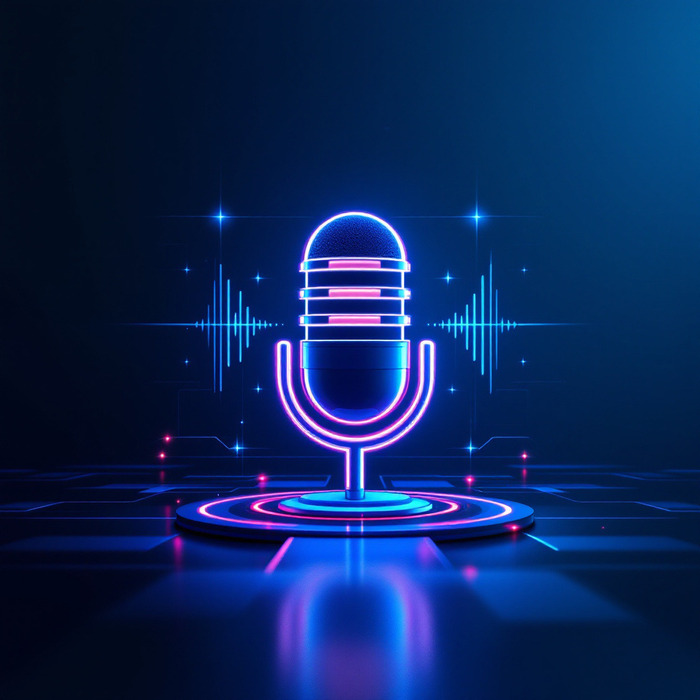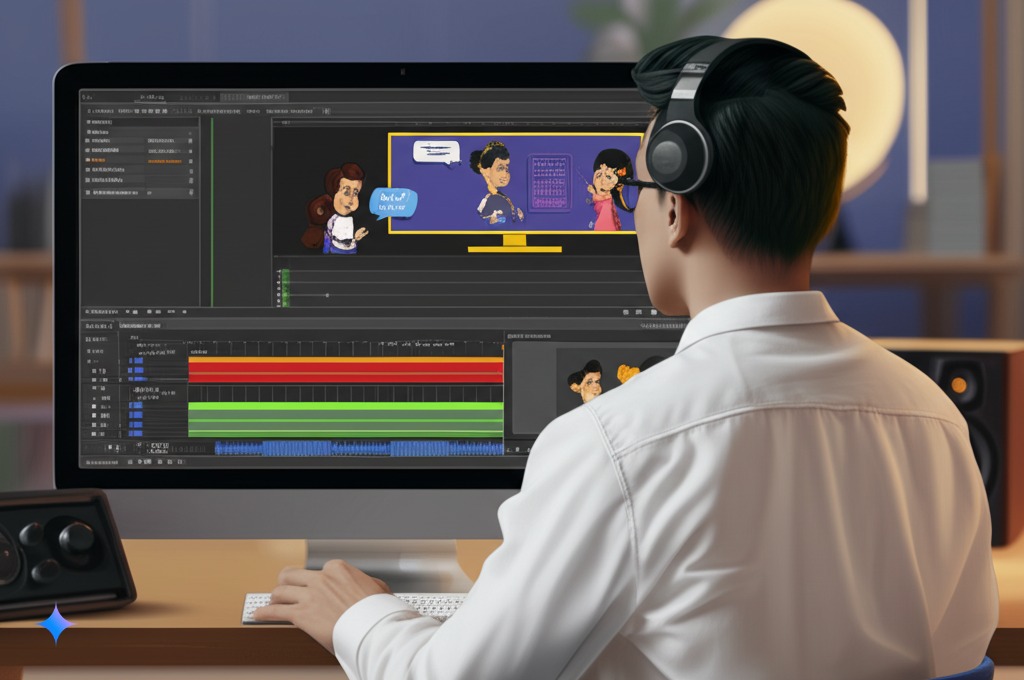
Discover how AI voice actors in animation are changing production pipelines, cutting costs, and enabling global reach. Learn about implementation, ethics, and the future of human-AI collaboration.
Introduction
Remember when every cartoon character needed a real person to speak their lines? That world is changing fast. AI voice actors in animation are shaking up how studios create talking characters, and it’s happening right now.
I’ve spent the last year talking with animation studios, voice actors, and tech companies about this shift. What I’ve found is pretty eye-opening. A studio head told me they cut their voice production time in half using animation AI voice technology for background characters. Another mentioned saving over $100,000 on a project by using digital voice actors for multiple language versions.
The technology behind AI voice actors in animation has improved dramatically. Just five years ago, computer voices sounded robotic and flat. Now? They can laugh, whisper, sound excited, or even cry – all while sounding surprisingly human.
This isn’t just about saving money (though that’s a big part of it). AI voiceovers in animated content are helping studios create more versions of their shows, reach new countries faster, and experiment with dialogue without bringing actors back to the studio repeatedly.
Of course, this raises big questions. What happens to human voice actors? Will kids notice the difference? How do you actually implement this tech in a real production pipeline?
In this guide, I’ll walk you through everything: how AI voice actors in animation work, the business benefits, implementation details, ethical considerations, and where this is all heading. Whether you’re a small YouTube animator or working at a major studio, you’ll find practical info you can use right away.
Let’s dive into the world where computers are learning to talk like humans – and what it means for the future of animation.
Want to explore AI voice over for YouTube videos? Check out our guide
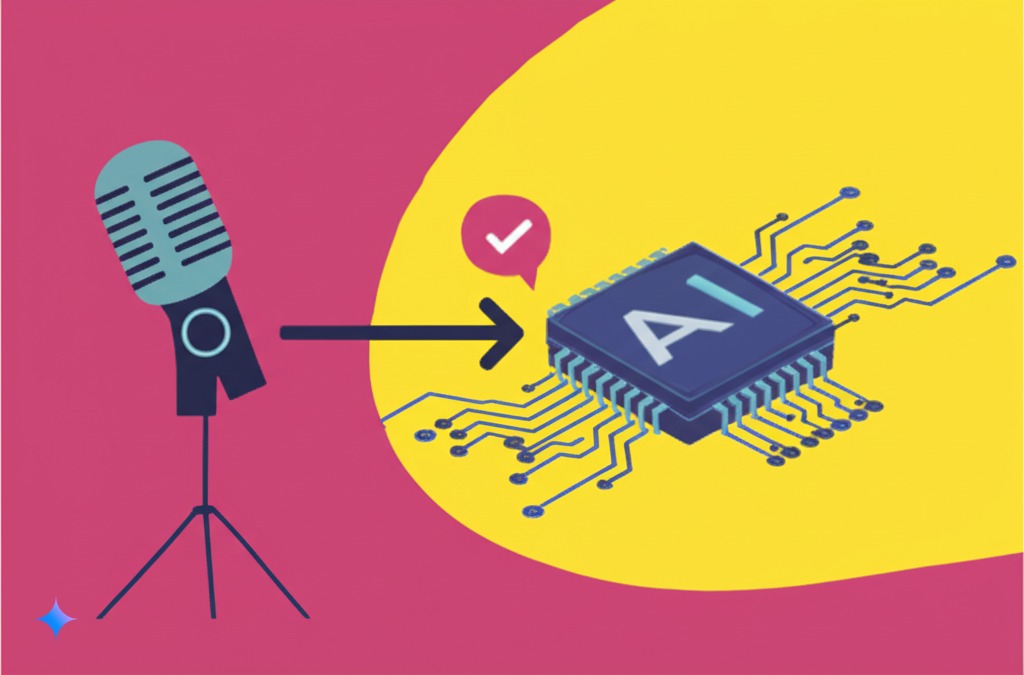
Understanding AI Voice Technology in Animation
Evolution of Voice Acting in Animation
The journey to AI voice actors in animation has been a long one:
- Traditional voice acting (1920s-2010s)
- Professional actors in recording studios
- Often one recording session per episode
- Limited changes once recorded
- Expensive re-recordings for script changes
- Early text-to-speech (2000s-2010s)
- Robotic, unnatural speech
- Limited emotional range
- Primarily used for temp tracks
- Often distracting to viewers
- Neural voice models (2015-present)
- Based on real human voice recordings
- Natural-sounding speech patterns
- Ability to convey basic emotions
- Increasingly difficult to distinguish from humans
An animation director I spoke with said: “We used to laugh at computer voices in our production meetings. Now we’re actually using AI dubbing for animation in finished products, and most viewers have no idea.”
Core Technologies Powering AI Voice Actors
What makes modern voice synthesis for animation so much better than previous attempts?
Voice Synthesis Foundations
Modern neural voice models for cartoons use several advanced technologies:
- Deep learning networks trained on thousands of hours of human speech
- Spectral analysis to capture the unique qualities of a voice
- Neural text-to-speech (TTS) that understands context and emphasis
- Voice cloning in animation industry to recreate specific voice types
Emotional Range Technologies
The biggest breakthrough for AI voice actors in animation has been emotional expression:
- Sentiment analysis of the script to detect emotional context
- Parameterized emotion controls allowing manual adjustment
- Contextual understanding of dialogue relationships
- Cadence and timing models that sound natural
A tech developer explained it to me this way: “We’re not just generating speech anymore. We’re generating performances.”
Learn more about AI text to speech for narration applications
Distinguishing Between AI and Human Voice Performance
How can you tell the difference between AI voice actors in animation and humans? It’s getting harder, but there are still tells:
Where AI Excels
- Consistency: The voice never gets tired or changes unintentionally
- Availability: Generate lines anytime without scheduling sessions
- Accuracy: Perfect pronunciation of difficult words when properly programmed
- Scalability: Create numerous variations quickly
Where Humans Still Win
- Subtle emotions: Complex feelings like “nervous excitement” or “reluctant admiration”
- Comic timing: Knowing exactly when to pause for laughs
- Character growth: Evolving a voice as a character develops
- Improvisation: Adding unscripted elements that improve the scene
A casting director noted: “For background characters or standard lines, digital voice actors can be surprisingly good. For your emotional lead roles, humans still bring something special.”
Business Impact and Production Advantages
Cost-Efficiency and Production Timeline Benefits
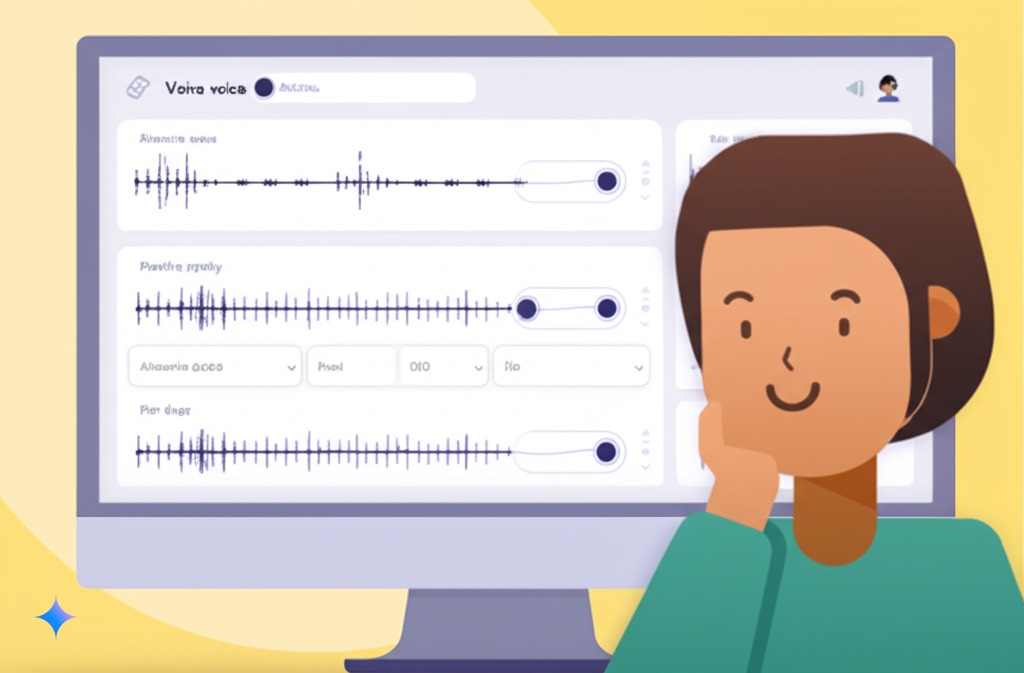
The business case for AI voice actors in animation is compelling:
Cost Savings
- Studio time reduction: Less booth time needed for recording
- Fewer retakes: Generate new lines until they’re perfect
- Streamlined editing: Some systems can auto-edit dialogue
- Reduced talent costs: Particularly for minor characters and background voices
Timeline Improvements
- Parallel processing: Generate multiple character voices simultaneously
- Instant revisions: Change lines without rebooking actors
- Early voice integration: Test voices before animation is complete
- Faster iterations: Try different reading styles in minutes, not days
An indie animation producer shared: “Using AI voiceovers in animated content cut our production time by about 30%. For a small team like ours, that’s the difference between making one short a year versus making three or four.”
Check out free AI voice cloning options for smaller projects
Localization and Global Market Access
One of the biggest advantages of AI voice actors in animation is making global distribution easier:
Multilingual Capabilities
- Consistent character voices across all languages
- Rapid translation processing once scripts are adapted
- Cultural accent adjustments for regional authenticity
- Support for languages with limited voice talent pools
Market Expansion Benefits
- Simultaneous global releases instead of staggered schedules
- Testing in new markets without major investment
- Niche language support for smaller audience segments
- Standardized quality across all language versions
A distribution executive explained: “Before animation voice production technology, we might wait 6-12 months to launch in smaller markets. Now we can release in 20+ languages within weeks of the English version.”
Creative Flexibility and Iteration Capabilities
AI voice actors in animation give creators new freedom to experiment:
Script Development Advantages
- Try multiple dialogue approaches quickly
- Hear lines read aloud during writing process
- Test audience reactions to different versions
- Last-minute changes without production crises
Character Development Benefits
- Experiment with voice characteristics before casting
- Create unique voices for large cast shows
- Evolve character speech patterns gradually
- Maintain consistency across seasons and spinoffs
A showrunner told me: “We used synthetic voice for animated characters during development to try different dialogue approaches. We ended up rewriting 40% of the script after hearing how things actually sounded – before we ever brought in human actors.”
Explore AI text to speech online tools for quick dialogue testing
Technical Implementation Considerations
Integration with Animation Software and Pipelines
How do studios actually implement AI voice actors in animation workflows?
Common Integration Methods
- API connections to major animation platforms
- Direct plugins for software like Toon Boom
- Integration with Adobe Character Animator
- Custom connectors for Maya and other 3D platforms
- Web services for cloud-based generation
- Workflow integration approaches
- Pre-visualization with temp AI voices
- Batch processing of dialogue files
- Real-time generation during animatic phase
- Final voice replacement for localization
An animation tech director shared: “We built a custom pipeline that lets our story team hear AI voiceovers in animated content right from the storyboard phase. It’s changed how we develop stories completely.”
Technical Requirements
For good quality AI voice actors in animation, studios need:
- Sufficient computing resources (local or cloud)
- High-quality input text with proper punctuation
- Clean reference audio for voice cloning
- Properly configured emotion tags for natural delivery
Learn about AI text to speech quality factors that affect animation voices
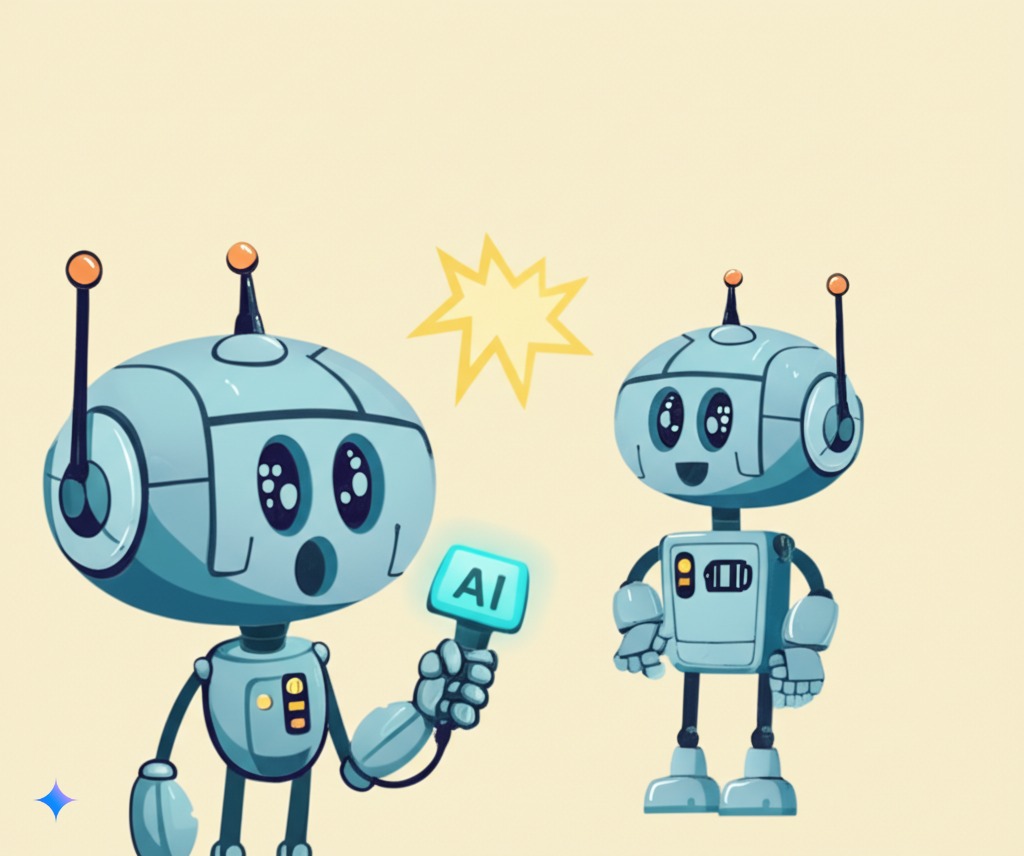
Speech-Driven Animation Technologies
The next frontier combines AI voice actors in animation with automated animation:
Lip-Syncing Automation
- Phoneme detection for accurate mouth shapes
- Timing analysis for natural movement
- Style transfer to match artistic direction
- Real-time preview capabilities
Facial Animation
- Emotion-driven expression systems
- Procedural animation rules based on speech patterns
- Machine learning models trained on actor performances
- Automated secondary motion for natural feel
A technical animator explained: “The magic happens when you connect animation AI voice technology directly to your character rigs. We can generate rough animations directly from the script now, which was science fiction just five years ago.”
Quality Control and Enhancement Processes
Implementing AI voice actors in animation requires careful quality checks:
Common Quality Issues and Solutions
- Pronunciation challenges
- Custom dictionaries for unusual words
- Phonetic spelling options for proper names
- Manual review of technical or fantasy terms
- Syllable emphasis correction tools
- Emotional consistency
- Emotion tagging systems for scripts
- Context awareness across scenes
- Reference pattern libraries
- Manual adjustment controls
- Voice matching
- Voice profile management
- Character voice evolution tracking
- A/B comparison tools
- Granular control of voice characteristics
A QA specialist for an animation studio noted: “We have a 15-point checklist specifically for digital voice actors that covers everything from pronunciation to emotional consistency. Getting it right takes work, but the results can be surprisingly good.”
Check out TTS vs human voices for a deeper comparison
Industry Response and Ethical Considerations
Voice Actor Community Reactions
How are real voice actors responding to AI voice actors in animation?
Common Concerns
- Job displacement fears, especially for entry-level work
- Compensation questions for AI trained on actor performances
- Credit and recognition issues for AI-assisted performances
- Long-term career impact on the voice acting profession
Adaptation Strategies
Some actors are finding ways to work with, rather than against, the technology:
- Selling licensed voice models of their own performances
- Specializing in emotion-heavy roles where AI struggles
- Developing AI direction skills to shape synthetic performances
- Training AI systems with their expertise
A veteran voice actor told me: “I was terrified of animation AI voice technology at first. Now I’m working with a tech company to create licensed versions of my voice that I get paid for whenever they’re used. It’s actually created a new revenue stream.”
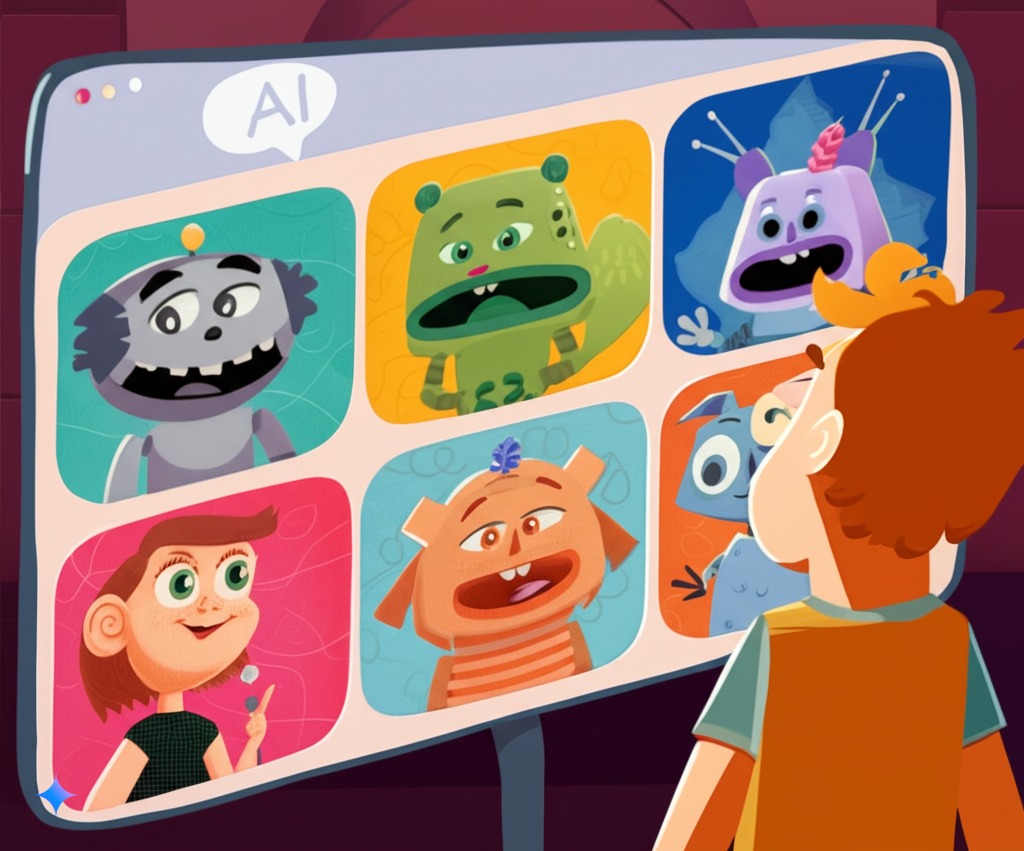
Ethical Guidelines and Emerging Standards
The industry is developing rules for responsible use of AI voice actors in animation:
Consent Requirements
- Explicit permission for voice cloning
- Clear scope definitions for how synthetic voices can be used
- Time and usage limitations in contracts
- Withdrawal rights under certain conditions
Transparency Practices
- Clear crediting of AI-generated voices
- Disclosure to audiences when appropriate
- Performance attribution when based on human actors
- Behind-the-scenes education about production methods
A studio executive explained: “We’re developing ethical guidelines for AI voiceovers in animated content that we apply to all our projects. The technology is moving fast, but we need to make sure we’re using it responsibly.”
Legal Framework and Rights Management
The legal landscape for AI voice actors in animation is evolving quickly:
Current Protections
- SAG-AFTRA contract provisions addressing AI voices
- Copyright considerations for voice performances
- Licensing models for synthetic voice usage
- International variations in legal approaches
Emerging Issues
- Voice likeness rights being established in court cases
- Posthumous voice usage questions
- Training data transparency requirements
- Cross-border regulation differences
A entertainment lawyer noted: “The recent SAG-AFTRA animation contracts include specific protections regarding AI voice actors in animation, including consent requirements and additional compensation. This is just the beginning of how these rights will be defined.”
Learn more about free text to voice technology and rights considerations
The Future of Human-AI Collaboration in Animation
Hybrid Production Models
The future isn’t about replacing humans – it’s about collaboration between people and AI voice actors in animation:
Emerging Hybrid Approaches
- Tiered voice systems
- Human actors for main characters
- AI voices for secondary characters
- Hybrid approaches for characters that evolve
- Human-guided AI performance
- Actors providing base performances
- AI extending and scaling those performances
- Directors shaping AI output
- Specialized role division
- Humans handling emotional complexity
- AI handling repetitive dialogue
- Combined approaches for large projects
An animation producer shared: “We’re finding the sweet spot is using human actors to establish character voices, then using AI dubbing for animation to extend those performances across episodes and languages.”
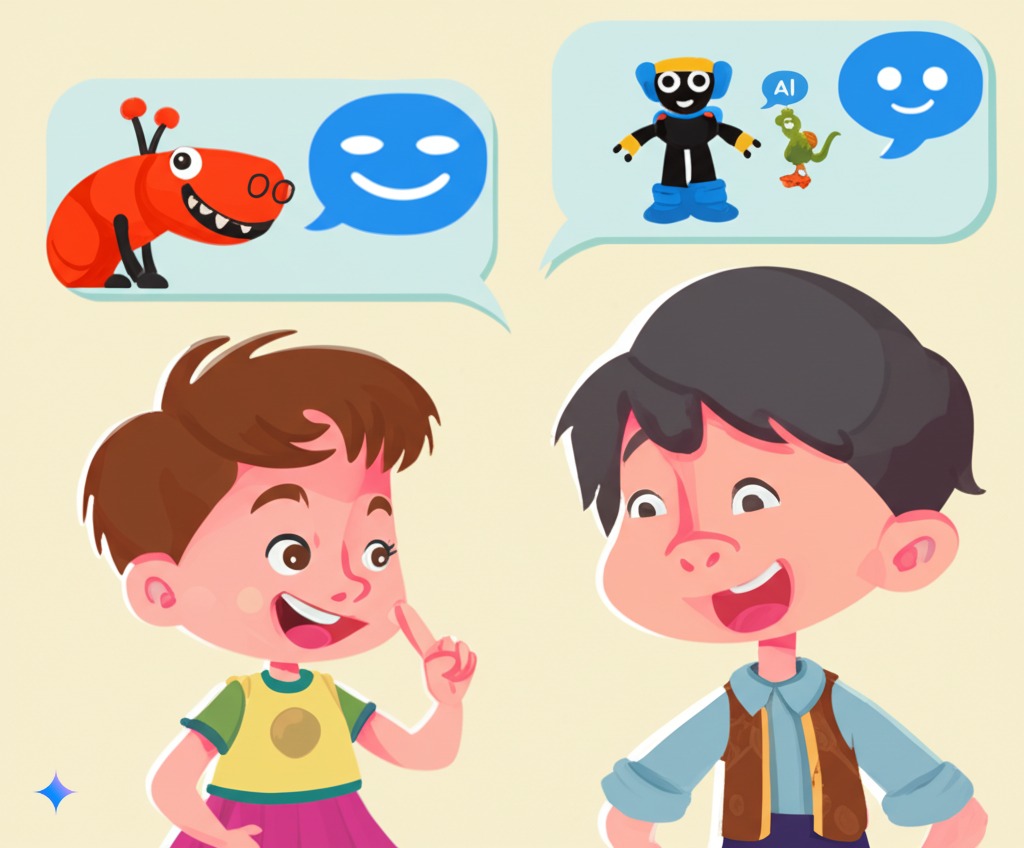
New Opportunities for Voice Professionals
AI voice actors in animation are creating new career paths:
Emerging Roles
- Voice design specialists
- Creating distinctive AI voice profiles
- Tuning emotional parameters
- Developing character voice evolution
- AI performance directors
- Guiding AI systems for natural delivery
- Creating emotion maps for scenes
- Ensuring performance consistency
- Voice data specialists
- Curating training datasets
- Managing voice libraries
- Overseeing quality control
- AI-human integration producers
- Managing hybrid voice production
- Determining which roles need humans
- Optimizing production pipelines
A casting director explained: “I’m now spending part of my time casting human actors and part of my time selecting and tuning digital voice actors. It’s become a new specialization that combines technical and artistic judgment.”
Explore AI voices for professional presentations to see where the quality stands
Technological Advancement Trajectory
Where are AI voice actors in animation headed next?
Near-Future Developments (1-3 Years)
- Enhanced emotional range with more subtle variations
- Better context awareness across full scripts
- Improved singing capabilities for musical content
- More natural conversation flow between characters
Longer-Term Possibilities (3-7 Years)
- Dynamic audience adaptation (different versions for different viewers)
- Real-time performance adjustment based on context
- Indistinguishable quality from human actors in most contexts
- Creative AI suggestions for dialogue improvement
A voice technology researcher predicted: “Within five years, AI voice actors in animation will be able to handle about 90% of what human voice actors do today. But that last 10% – the truly extraordinary emotional performances – will still belong to humans for the foreseeable future.”
AI Voice Implementation Case Studies
Major Studio Implementations
How are big studios using AI voice actors in animation today?
Disney Explorations
- Background character generation for crowd scenes
- Early testing of localization approaches
- Theme park attraction voice synthesis
- Marketing content creation
Netflix Approaches
- Rapid localization pipeline for global releases
- Kids’ show customization features
- Regional accent adaptation technology
- Supporting 30+ languages efficiently
Independent Animation Studios
- Fully AI-voiced web series experiments
- Budget-stretching approaches for small teams
- Direct-to-consumer animation with quick turnarounds
- Voice customization options for viewers
A Netflix production executive shared (not for attribution): “AI voiceovers in animated content have become essential to our global release strategy. We can now launch in almost every market simultaneously, which was logistically impossible before.”
Learn about blog to audio conversion technologies related to animation voiceover
Success Stories and Lessons Learned
Real-world examples of AI voice actors in animation making a difference:
Case Study: Indie Short Film Success
A small studio created a 10-minute animated short with:
- 2 human voice actors for the leads
- AI voice actors in animation for 15 supporting characters
- Releases in 8 languages simultaneously
- 70% cost reduction compared to traditional methods
Result: Festival acceptance in 12 countries and streaming pickup that wouldn’t have been possible with their original budget.
Case Study: Children’s Show Localization
A popular children’s series used:
- Human actors for the English version
- Neural voice models for cartoons in 24 additional languages
- Consistent character voices across all languages
- 3-week turnaround for all versions
Result: Viewership increased by 140% globally due to simultaneous release and consistent quality.
Lessons Learned
From studios that have implemented AI voice actors in animation:
- Start small with background characters or non-critical scenes
- Create clear voice briefs for consistent results
- Build proper review processes with dedicated QA
- Develop character voice libraries for consistency
- Train your writers to create AI-friendly dialogue
An animation director advised: “Don’t try to replace all your voice acting with AI at once. Start with the places where synthetic voice for animated characters makes the most sense, learn the technology, then gradually expand.”
Accessibility and Inclusion Benefits
Expanding Animation Access Through AI Voices
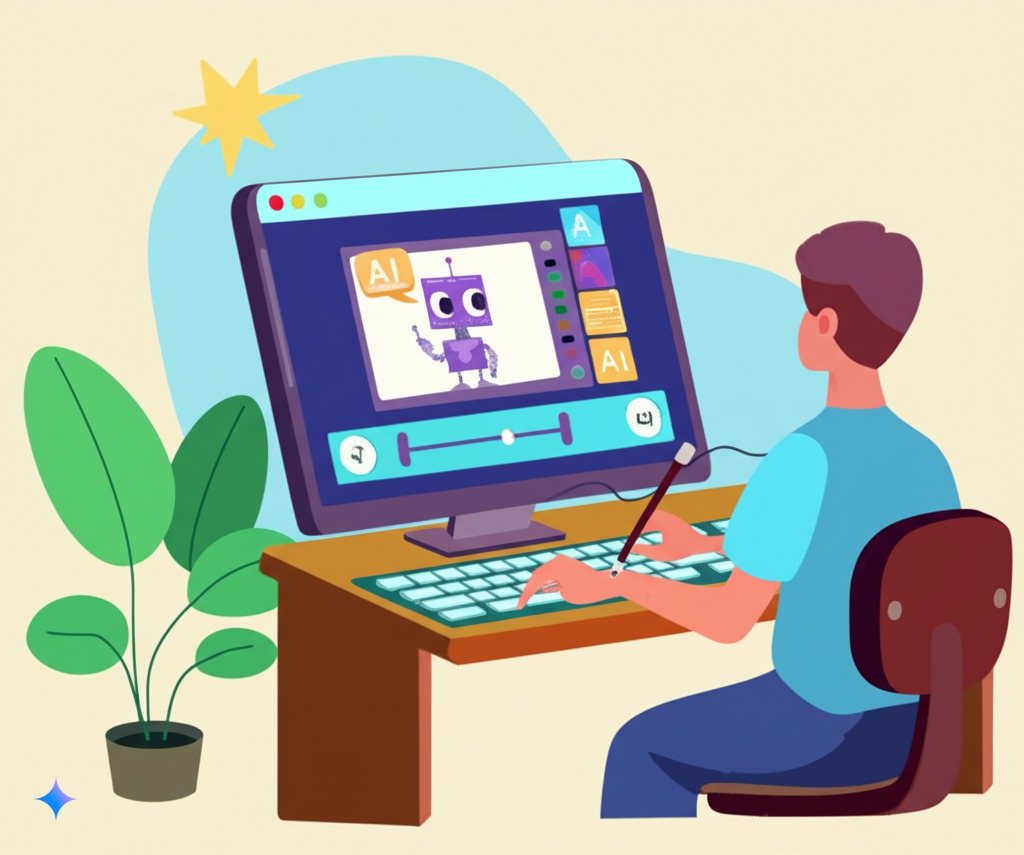
AI voice actors in animation can make content more accessible:
Underserved Language Communities
- Supporting minority languages with limited voice actor pools
- Indigenous language preservation through animation
- Dialect-specific versions of popular content
- Educational materials in local languages
Viewers with Different Abilities
- Enhanced audio descriptions for visually impaired viewers
- Simplified language versions for cognitive accessibility
- Adjusted speech rates for comprehension support
- Reading support for text-heavy content
An accessibility advocate explained: “Animation voice production technology is helping create content for language communities that major studios would never support through traditional methods. It’s opening up animation to audiences who’ve been excluded.”
Personalization Capabilities for Viewers
Future systems may let viewers customize AI voice actors in animation:
Potential Customization Options
- Voice characteristic preferences (pitch, speed, accent)
- Familiar voice selection for comfort and engagement
- Age-appropriate voice adjustment for different viewers
- Cultural reference adaptation for better relevance
A tech developer working on these systems shared: “We’re working on letting viewers choose how digital voice actors sound to them. Imagine a grandparent being able to ‘read’ a cartoon to their grandchild from across the country, with the character voices in the show matching their actual voice.”
Learn about how text to speech for e-learning relates to educational animation
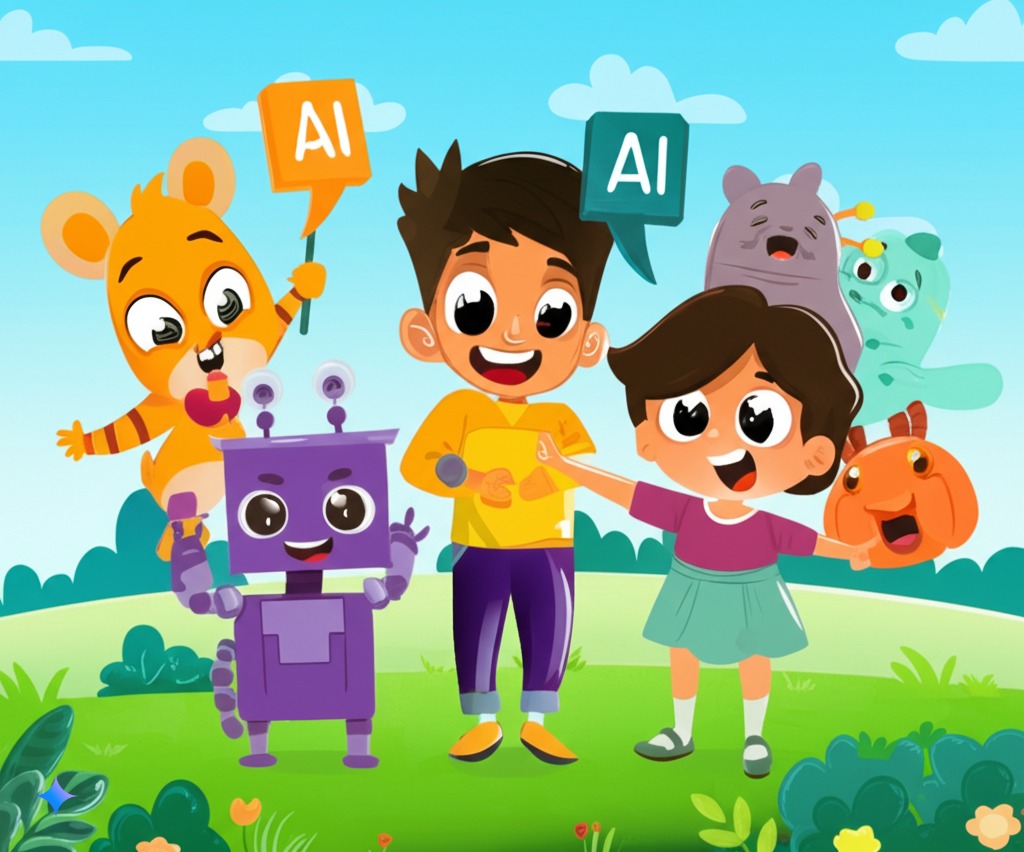
Conclusion
The rise of AI voice actors in animation represents one of the most significant shifts in animation production since the move from hand-drawn to digital techniques. This technology is already changing how studios create content, enabling more efficient production, expanding global reach, and opening new creative possibilities.
While animation AI voice technology won’t completely replace human voice actors anytime soon, it’s creating a new production landscape where both humans and AI play important roles. The most successful studios will be those that find the right balance – using AI for efficiency and scale while preserving the human performance elements that give characters their heart and soul.
For animation professionals, this means adapting to new workflows, learning new skills, and thinking differently about voice production. For audiences, it means more content in more languages, with increasing quality and customization options.
AI voice actors in animation are not just a technical novelty or cost-saving measure – they’re enabling stories that wouldn’t otherwise be told and helping those stories reach viewers who wouldn’t otherwise be served.
As the technology continues to advance, the line between human and AI voiceovers in animated content will become increasingly blurred. But the fundamental goal remains the same: creating compelling characters that connect with audiences emotionally. The voice – whether human, AI, or a carefully orchestrated combination of both – is simply a means to that end.
Explore AI text to speech solutions for your animation projects
FAQs About AI Voice Actors in Animation
What is AI voice synthesis in animation?
AI voice actors in animation use artificial intelligence to generate realistic speech for cartoon characters without recording human actors for every line. These systems analyze scripts, understand context, and create natural-sounding dialogue with appropriate emotions. Unlike older text-to-speech systems, modern voice synthesis for animation can express a range of emotions and sounds remarkably human.
Will AI voice actors replace human voice actors?
Not entirely. AI voice actors in animation are creating a hybrid industry where humans handle emotionally complex lead roles while digital voice actors cover supporting characters and localization. The best approach is often having humans establish character voices, then using AI to extend those performances. Voice actors are also finding new opportunities training and directing AI systems.
How do animation studios implement AI voice technology?
Studios integrate AI voice actors in animation through software platforms or APIs that connect with their existing animation pipeline. Most start with cloud-based solutions for processing dialogue, beginning with script analysis and voice selection. Many use AI voiceovers in animated content first for pre-visualization, then gradually include them in final production as results improve.
What are the cost implications of using AI voice actors?
AI voice actors in animation can reduce production costs by 50-80%, especially for projects with extensive dialogue or multiple language versions. Traditional voice recording costs $400-1,500 per hour for independent projects, while AI systems typically use subscription models ($30-500 monthly). The savings are greatest for localization, where animation voice production technology eliminates hiring voice actors in multiple countries.
What rights protections exist for voice actors regarding AI?
Recent SAG-AFTRA contracts include key protections: required consent before voice cloning, compensation for AI replicas, limitations on usage time, and transparency requirements. Outside unions, licensing models let actors authorize specific uses of their voice patterns for synthetic voice for animated characters. These protections continue evolving through negotiations between talent representatives, studios, and tech providers.
Can AI voices convey the same emotional range as human actors?
Current AI voice actors in animation handle basic emotions well but struggle with subtle transitions and complex feelings like “nervous excitement.” For simple emotional scenes, viewers often can’t distinguish between AI and humans. However, for performances requiring deep emotional resonance or character growth, human actors maintain an advantage. The technology is improving rapidly, with emotional range being a primary focus for neural voice models for cartoons.
Sources
- https://www.respeecher.com/blog/ai-voiceovers-film-animation
- https://comicbook.com/anime/news/anime-voice-actors-fight-ai-dragon-ball/
- https://voiceoverkickstart.com/the-future-of-voice-acting/
- https://developer.nvidia.com/blog/generating-character-animations-from-speech-with-ai/
- https://neilpatel.com/blog/answer-engine-optimization/
- https://kidscreen.com/2024/03/25/voice-actors-get-ai-protections-in-new-animation-contracts/

